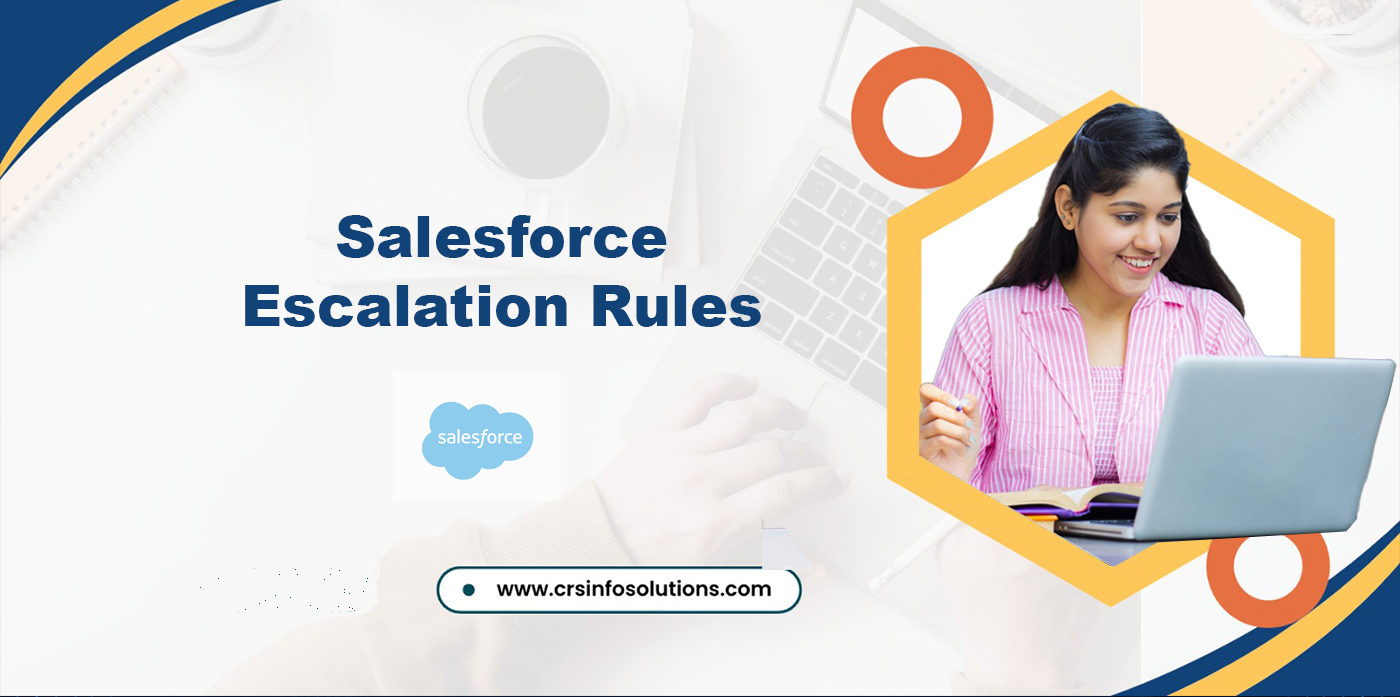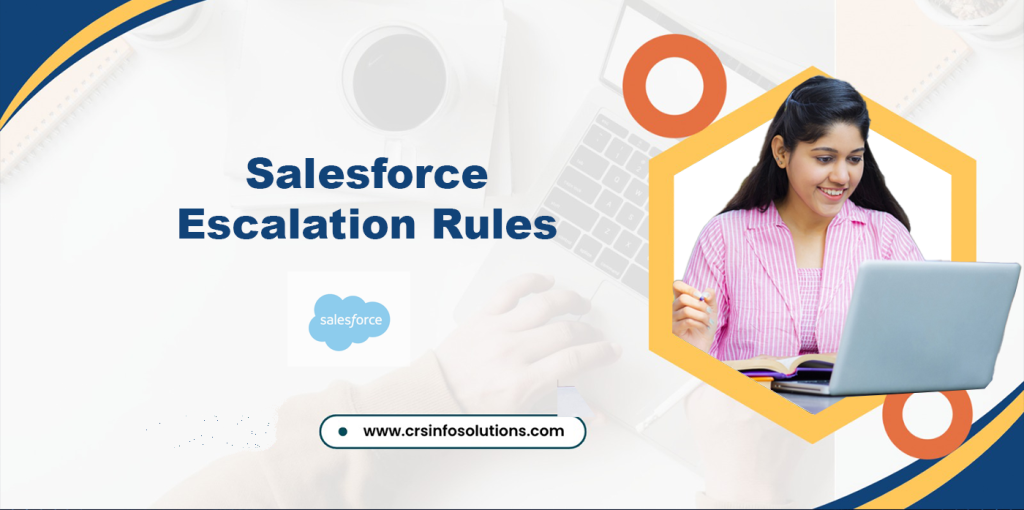
Salesforce Escalation Rules

Table of Contents
In the realm of customer relationship management (CRM) systems, Salesforce stands out for its robust features designed to streamline sales processes. One such feature is Escalation Rules, a powerful tool that ensures timely response and resolution of customer issues.
Let’s delve into the intricacies of Escalation Rules and explore how they can optimize your sales operations.
Understanding Escalation Rules:
Monitor Escalations:
At the heart of Escalation Rules lies the concept of Monitor Escalations. This functionality allows Salesforce users to set criteria for when a case requires escalation. These criteria typically include factors such as case age, priority, or specific keywords within the case description. When a case meets these predefined conditions, it triggers the escalation process.
Preparing for your next Salesforce interview? Check out these essential Salesforce interview questions and answers to give you an edge.
Escalation Rule Entry:
Escalation Rule Entry determines which cases are eligible for escalation based on the criteria defined in Monitor Escalations. Salesforce administrators can create multiple rule entries, each with its own set of criteria. For example, a rule entry might specify that cases of high priority older than 24 hours should be escalated to the next level of support.
Escalation Rule Action:
Once a case qualifies for escalation, Escalation Rule Actions come into play. These actions dictate what happens next in the escalation process. Common actions include assigning the case to a higher-tier support agent, notifying supervisors via email or SMS, or escalating the case to a designated queue for immediate attention.
Monitor Escalations:
Monitor Escalations serve as the foundation of Salesforce’s Escalation Rules, allowing users to establish criteria for when a case warrants escalation. These criteria are customizable and typically include factors such as case age, priority level, or specific keywords within the case description. For instance, a Monitor Escalation might be configured to trigger when a case remains unresolved for a certain period or when it reaches a critical priority status. By defining these criteria, organizations ensure that cases requiring immediate attention are promptly escalated to the appropriate personnel.
Elevate your Salesforce skills with our hands-on Salesforce online course.
Escalation Rule Entry:
Escalation Rule Entry determines which cases are eligible for escalation based on the criteria outlined in Monitor Escalations. Administrators can create multiple rule entries, each with its own set of criteria tailored to specific scenarios. For example, a rule entry might specify that cases of medium priority older than 48 hours should be escalated to a senior support agent, while cases of low priority older than 72 hours should be escalated to a designated escalation queue. By configuring Escalation Rule Entry, organizations can effectively manage and prioritize their support workload, ensuring that critical issues are addressed in a timely manner.
Read more: Approval Process in Salesforce.
Escalation Rule Action:
Once a case meets the criteria defined in Monitor Escalations and Escalation Rule Entry, Escalation Rule Actions come into play. These actions dictate the steps taken when a case is escalated, such as assigning it to a higher-tier support agent, notifying supervisors, or escalating it to a specific queue for immediate attention. For instance, when a high-priority case remains unassigned for a certain period, the Escalation Rule Action may automatically assign the case to a senior support agent with the necessary expertise to resolve the issue promptly. By implementing Escalation Rule Actions, organizations can automate the escalation process and ensure that escalated cases are handled efficiently and effectively.
Preparing for your next Salesforce interview? Check out these essential Salesforce interview questions and answers to give you an edge.
Define the Escalation Action:
An Escalation Action refers to the specific steps taken when a case meets the criteria for escalation as defined in the Escalation Rules. These actions are customizable and can vary depending on the organization’s requirements. Common Escalation Actions include:
- Assigning the case to a higher-tier support agent or a designated escalation queue.
- Notifying supervisors or team members via email, SMS, or other communication channels.
- Updating the case status or priority to reflect its escalated status.
- Triggering automated workflows or processes to expedite resolution.
- Logging escalation details for tracking and reporting purposes. By defining Escalation Actions, organizations can ensure that escalated cases are promptly addressed and resolved, ultimately enhancing customer satisfaction and loyalty.
Master the Database methods in Salesforce Apex to perform sophisticated database operations with ease.
Use Case:
Consider a scenario where a company offers technical support for its products through Salesforce. The support team has set up Escalation Rules to ensure prompt resolution of customer issues.
Scenario:
A customer submits a case reporting a critical issue with their product, indicating that it’s affecting their ability to perform essential tasks. The case is assigned a high priority status and enters the support queue. However, due to unforeseen circumstances, it remains unattended for over four hours.
Escalation Rule Implementation:
To prevent such delays, the support team has configured Escalation Rules. A Monitor Escalation is set to trigger when a high-priority case remains unassigned for more than two hours. This criteria serves as the entry point for the Escalation Rule.
Action Taken:
Once the criteria are met, the Escalation Rule Action automatically assigns the case to a senior support agent with expertise in handling critical issues. Simultaneously, an email notification is sent to the support supervisor, alerting them of the escalated case.
Salesforce Escalation Rules empower organizations to deliver superior customer service by ensuring that no issue goes unresolved for too long. By leveraging Monitor Escalations, Escalation Rule Entry, and Escalation Rule Action, businesses can streamline their support processes, boost efficiency, and ultimately enhance customer satisfaction. With the right configuration and proactive monitoring, Escalation Rules become a valuable asset in any sales team’s arsenal.
Searching for exceptional Salesforce training in Pune? CRS Info Solutions is your go-to choice. Our job-oriented training, conducted by mentors with over 15 years of industry experience, offers expert guidance and career-building support. Benefit from daily notes, certification preparation, and job placement assistance, ensuring you have the skills and knowledge to thrive in your Salesforce career. Enroll in our Salesforce training in Pune and join our free demo today!

